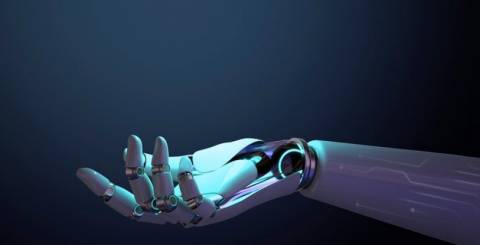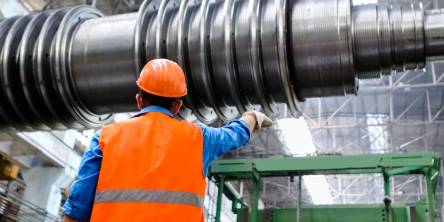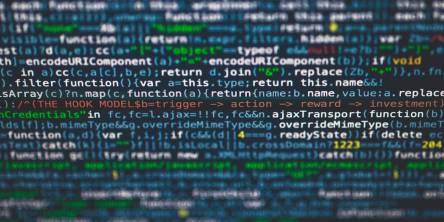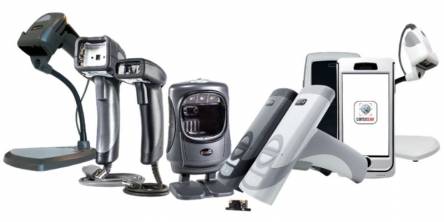Robots with Human Hands: The Future of Dexterous AI

The field of artificial intelligence (AI) has seen unprecedented progress in recent years that has extended machines' capabilities. The integration of robots with hands that resemble those of humans, which heralds a new era of AI, is a particularly captivating advancement. In this article, we examine the effects of robots using human hands and how they influence AI business arrangements' future.
The Headway of Mechanical Innovation:
Before getting into the specifics of manipulating robots with human hands, it is essential to have a solid understanding of how robotics came to be. Regular robots were now and again bound to repetitive tasks in controlled conditions without the shrewdness expected for marvelous, authentic applications. A change in perspective happened when AI was integrated into mechanical technology. Machines were given the ability to learn, alter, and perform actions that were not originally programmed into them.
Skillful AI: Human-Owned Robots:
The development of AI-driven robotics has made a significant leap forward with the development of robots whose hands resemble those of humans. These robots mirror the finesse and adaptability of human hands, furnished with unpredictable sensors and actuators to control protests exactly. The objective is to close the gap between what humans can do and how well machines work, which will open up a lot of possibilities for AI business solutions.
Tactile Accuracy:
One of the characterizing elements of robots with human hands is their tangible accuracy. High-level sensors implanted in these automated hands empower them to see and comprehend the actual world precisely. These machines can gauge the texture, shape, and temperature of objects they interact with using tactile sensors, which replicate the capabilities of the human sense of touch.
This elevated tangible accuracy is priceless in enterprises like assembling, where the fragile treatment of materials is fundamental. Because robots can navigate intricate tasks with a level of precision that was previously unattainable, this translates into improved efficiency and reliability in AI business solutions.
Adaptive Education:
Robots that humans control can engage in adaptive learning thanks to the incorporation of AI algorithms. These machines can examine information from their environmental elements, gain as a matter of fact, and constantly refine their capacities. They are versatile collaborators because of their ability to learn in dynamic business settings and virtual reality environments, where adaptability is essential.
Getting a handle on Variety:
The capacity of robots with human hands to show many getting a handle on procedures is an important element. Customary mechanical grippers frequently battled with caring for objects of fluctuating shapes, sizes, and surfaces. In contrast, robots with hands that are similar to those of humans can dynamically adjust their grip based on the properties of the object they are manipulating.
This element is particularly important in businesses, such as coordinated factors and assembly, where items come in different shapes and sizes. The adaptive grasping abilities of the robots make them more effective at tasks like picking and placing items in warehouses or putting together intricate parts on a manufacturing line.
Collaboration with two arms:
Dissimilar to customary single-arm robots, Handy AI frequently includes the utilization of double-arm mechanical frameworks that can work cooperatively. The cooperative energy between two automated arms further expands the scope of tasks these machines can perform. Double-arm cooperation enables more complex operations, such as manipulating large objects, performing assembly tasks requiring simultaneous actions, or executing intricate procedures in medical settings. An AI development company plays a pivotal role in designing and integrating the intelligent control systems that make such advanced coordination possible.
This component has wide ramifications for ventures like medical care, where surgeries might include numerous means that require synchronous activities. Furthermore, in innovative work conditions, double-arm cooperation considers more complex trial and error and testing.
Adaptation in real-time:
Robots with human hands are intended to work in a genuine world and unique conditions. Because of this, one must be able to quickly adjust to new circumstances. These robots can evaluate data from their sensors in real time, modify their strategies in response to changing conditions, and carry on seamlessly with their tasks.
In ventures like horticulture, where robots are progressively utilized for errands like collecting, continuous transformation is basic. The capacity to explore lopsided landscapes, answer surprising snags, and conform to shifting yield conditions features the common sense of Adroit AIin tending to the difficulties of erratic conditions.
Safe Human-Robot Collaboration:
Guaranteeing safe cooperation among people and robots is a vital worry in businesses where they team up. By incorporating cutting-edge safety features, Dexterous AI addresses this issue. These may include force-detection mechanisms, proximity sensors, and responsive control systems that enable the robots to recognize and respond to human presence.
In collaborative settings, such as warehouses where humans and robots collaborate, this feature is essential. The execution of a safe human-robot connection advances an amicable workplace, limiting the gamble of mishaps and cultivating a cooperative and productive work process.
Sensing in Multiple Modals:
Multi-modal sensing capabilities, such as visual, tactile, and proprioceptive feedback, are frequently integrated into human-like robots. This multi-sensor approach upgrades the comprehension robots might interpret their current circumstance and the articles they associate with. For instance, visual sensors give a more extensive viewpoint, material sensors offer data about surface and tension, and proprioceptive sensors add to the familiarity with the robot's situation and development.
This multi-modal sensing enables the robots to evaluate products' tactile properties as well as their visual appearance in manufacturing applications like quality control. The materials and objects being manipulated can be better understood with this holistic approach to sensing.
In artificial intelligence business arrangements, versatile learning robots can upgrade processes, investigate issues independently, and advance to fulfill developing needs. These robots provide a scalable solution for businesses seeking innovation and efficiency, whether in logistics, healthcare, or customer service.
Applications in Different Ventures:
A wide range of industries are using robots with human hands, each with its own set of advantages from these machines' dexterity.
A. Production:
In assembling, accuracy is vital. Robots with human hands succeed in undertakings that require multifaceted get-togethers, fragile treatment of parts, and quality control. From gadgets to auto businesses, these robots smooth out creation processes, improve item quality, and add to general functional effectiveness.
The application of AI business solutions to manufacturing not only speeds up production but also lowers the number of mistakes made, resulting in cost savings and increased market competitiveness.
B. Medical care:
The medical care industry stands to acquire altogether from presenting robots with human hands. The stability and precision of robotic hands can now be utilized in surgical procedures that were previously dependent on human precision. Surgeons can benefit from the assistance of AI-driven robots during delicate procedures, increasing the success rate and decreasing the likelihood of human error.
Past medical procedures, these robots are additionally utilized in providing care, where their smoothness empowers them to perform undertakings, for example, lifting and helping patients. Simulated intelligence business arrangements in medical services improve patient consideration, ease staff responsibility, and add to the general proficiency of clinical offices.
C. Strategies and Warehousing:
In the strategies and warehousing, robots with human hands upset request satisfaction and stock administration. These robots can carry out tasks like picking and packing with an unparalleled level of efficiency because they can grasp and manipulate objects of a variety of shapes and sizes.
Simulated intelligence business arrangements in planned operations mean quicker request handling, diminished work costs, and further developed precision in stock administration. The outcome is a smoothed-out inventory network that fulfills the needs of the present-day, high-speed markets.
D. Service to Customers:
Robots with human hands likewise make advances in client care, giving a special mix of effectiveness and relational collaboration. In ventures like retail, where client commitment is pivotal, these robots can deal with undertakings, for example, restocking racks, helping clients, and in any event, working with exchanges.
In customer service, AI-based business solutions make operations more efficient, allowing businesses to use human resources for more intricate, relationship-focused tasks. The outcome is a better client experience and expanded consumer loyalty.
Difficulties and Contemplations:
While the joining of robots with human hands presents energizing opportunities for simulated intelligence business arrangements, it isn't without its difficulties. Resolving these issues is significant for understanding the maximum capacity of this innovation.
A. Considerable Ethical Issues:
The application of AI to a variety of industries raises ethical concerns regarding the loss of employment. There is concern seeing the effect on work as robots with human hands play out specific errands. To ensure that the benefits of AI business arrangements are shared fairly, it is essential to find some kind of harmony between mechanization and job maintenance.
Businesses must also consider the ethical implications of using AI in decision-making processes. Direct and careful man-made consciousness sending is crucial for staying aware of public trust and tending to worries associated with tendency and sensibility.
B. Specialized Difficulties:
Creating robots with human-like hands poses technical difficulties, including ensuring their robustness, dependability, and safety. These machines must be able to function in a variety of settings without violating safety regulations. The improvement of safeguard systems, mistake recognition, and crisis closure conventions is principal to forestall mishaps and moderate dangers.
In addition, for seamless integration into existing business workflows, it is essential to ensure compatibility and interoperability between various AI systems. Normalization endeavors inside the computer-based intelligence industry are essential to address these specialized difficulties and encourage a durable environment.
C. Information Security and Protection:
The combination of simulated intelligence in business arrangements includes the assortment and examination of immense measures of information. Shielding this information from unapproved access and guaranteeing security are basic contemplations. Organizations should execute strong network safety measures to defend delicate data and consent to information insurance guidelines.
Straightforwardness in information use and laying out clear arrangements regarding information proprietorship and agreement are essential to keeping up with trust among clients and partners. Data privacy and security concerns must be addressed as AI continues to dominate business operations.
The Future Scene of AI Business Arrangements:
The future landscape of AI business solutions is set to transform robots with human hands become increasingly sophisticated and find widespread adoption across industries.
Upgraded Joint effort:
Humans and AI-driven robots working together could reshape workplace collaboration. These robots won't take the place of human workers; rather, they will be tools for working together, enhancing human capabilities, and freeing up time for more innovative and strategic endeavors.
Artificial intelligence business arrangements that focus on human-robot joint effort will turn into the standard, encouraging conditions where the qualities of the two substances are bridled for ideal results.
Customization and Adaptability:
The flexibility of robots with human hands considers customization given explicit industry necessities. Robotic systems that are modular and adaptable and can be tailored to meet the specific requirements of various industries are likely to be a component of future AI business solutions.
Businesses will be able to use AI-driven robots in a variety of settings thanks to this flexibility, making them more adaptable and less expensive in the long run.
Conclusion:
Human-operated robots represent a groundbreaking period in the development of artificial intelligence and robotics. The joining of AI business arrangements is supposed to shape the eventual fate of how organizations work, develop, and flourish as these machines reclassify the potential outcomes in different enterprises.
The artfulness, flexibility, and precision of robots with human hands offer uncommon advantages in gathering, clinical consideration, facilitated factors, and client help, to say the least. The various likely advantages of this innovation offset the difficulties and moral contemplations that should be tended to.
Associations that embrace the potential entryways presented by robots with human hands, using them as agreeable gadgets in their AI business game plans, will most likely experience extended adequacy, further creating results and an advantage in the overall business community. As we investigate this unprecedented period, the mix of human imaginativeness with the limits of helpful AI broadcasts a future where improvement surpasses every normal restriction.
Similar Articles
Find a reliable sealing technology with these 7 tips on quality, materials, certifications, and scalability to ensure lasting performance in your industry.
These days, your business depends on strong telecom systems and well-built software to stay ahead. Whether you’re launching a digital product or improving your communication tools, choosing the right team to work with makes a big difference.
Sometimes it seems like walking on a tight-rope when it comes to talking openly in team chats.
Learn how .NET Web API supports scalable architecture. Explore real-world best practices in .NET development for building high-performance, reliable endpoints.
Learn how to spot real fast USB-C charging by checking 4 key specs—output power, protocols, cable compatibility, and smart power distribution.
In the modern world of retail, logistics, and inventory management, few technologies have proven as transformative as the humble barcode reader.
Businesses must quickly adjust to the unparalleled rate of technological advancement if they want to remain competitive. Consumer demands are constantly changing, requiring value to be delivered more quickly.
Vertical centrifugal pump is vital in a wide range of industries, providing high-quality and durable solutions for pumping fluids
Have you ever imagined turning a weekend hobby into a thriving business? With 3D printing, that dream is more possible than ever









